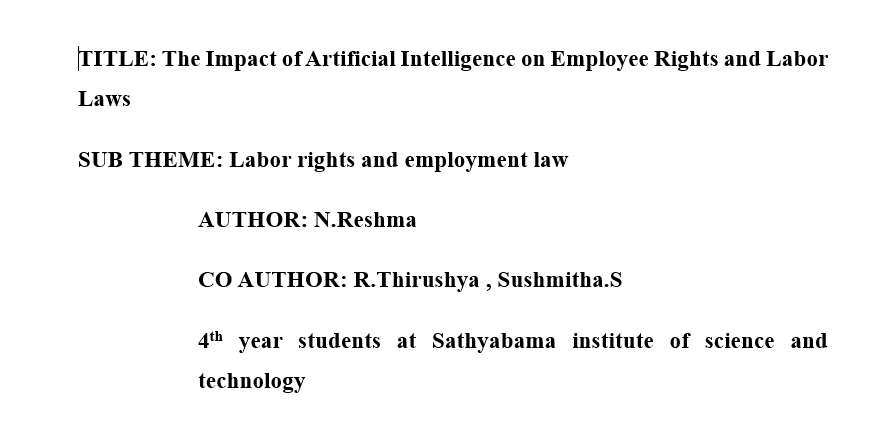Introduction
The growing intensity of natural disasters such as storms, landslides, floods and sea level rise in this regard affect land use and property rights. Property damage is, in most instances, a direct consequence of the largely adverse impacts. Strong property rights in land have had economic welfare benefits that have sparked academic debate over land policy and attempted attempts to reverse these implications. These are the relocation of populations, transferable development rights, and compensation systems. However, the several conceptions of property rights with the economics approach to land policy present conflicting ideas.
The way in which climate change affects the environment, especially in urban areas, impacts land use. Rising sea levels, more frequent storms, droughts, landslides, floods, and other disasters are the consequences. These erode the very foundation of property rights and land use.
Impact
Climate change has been profoundly affecting the property legislation of India, compelling judicial thinking toward various legal reforms and amendments to fit in with new issues. Sea-level rise, extreme weather events, and shifting rainfalls are bound to cause the loss and displacement of property, disputes over ownership and boundaries, and much more. Articles within this topic include legal analysis on testing and revising laws on property regarding issues in climate change and discussions about proactive approaches through land-use planning, insurance schemes, community resilience, and more. They may also explore selected case studies and examples that illustrate the complexities and impacts of climate change on property rights and land management policy in India.
These are the 10 impacts of climate change on Indian property laws:
1. Land Erosion: Rising sea levels, together with coastal erosion, will result in the loss of lands along the coastal areas, creating issues in boundary and property ownership.
2. Displacement: Floods, cyclones, and droughts resulting from climatic conditions have displaced people who are fighting for rights to ownership and settlement.
3. Depreciation of the Properties: Because of climate-related hazards, the value of properties that are lying in vulnerable zones is reducing, which serves as a determining factor for investments in those areas as well as degrades the existing insurance facilities.
4. Legal Battles: Water rights, access to natural sources, and land usage are being fought rigorously in courts as well as amendments in property laws.
5. Land Tenure Insecurity: These impacts of climate jeopardize the long-term viability of the land, thus undermining tenure security, further affecting the way agriculture is pursued and the land is developed.
6. Infrastructure Damage: Climate-related disasters cause damage to roads, bridges, and buildings leading to litigation issues concerning liability, compensation, and reconstruction.
7. Insurance Issues: Insurers have faced more claims and risks related to climate events, hence modifying conditions and terms of coverage, premiums, and regulatory compliance requirements.
8. Regulatory Changes: The government changes policies about land use, zoning laws, and building codes in a bid to counter climate risk and ensure sustainable development of the given property.
9. Community Resilience: Many communities embrace measures regarding land use planning, early warning systems, as well as disaster preparedness strategies. All these impact the laws surrounding properties and even governance structures in place.
10. International Obligations: Legislative response to comply with international climate agreements may necessitate that emission reductions be made and appropriate measures to cope with climatic changes become part of changes to the law on property at a national and local level.
How property law can help to drive the net zero transition?
Green leases
Green leases are leases that contain provisions to promote the sustainability of the property in question. This may be through clauses within the lease itself or obligations elsewhere such as tenant regulations or an environmental handbook. Memoranda of understanding are not legally enforceable but may also assist landlords and tenants to set out their obligations about sustainability.
As a result, because landlords tend not to pay for the energy consumed on their property, they often have little incentive to cut energy consumption or transition to renewable sources of energy. In contrast, tenants benefit financially from energy efficiency and low-carbon electricity but usually lack control over building, replacing, or sustaining associated facilities on the property. Green leases address this issue and impose conditions on the cooperation of owners and tenants in response to climate change, among other things, by imposing obligations on the improvement and maintenance of low-carbon facilities. Thus, since the government has demonstrated the intent to
enforce minimum standards relating to energy efficiency, green leases are helpful to landlords and tenants alike who may comply with statutory obligations. Better Building Partnership The Better Building Partnership has a Green Lease Toolkit which offers recommendations and model clauses targeted at landlords and commercial tenants. The Chancery Lane Project’s real estate clauses include examples of both commercial and residential climate-related provisions that can be incorporated into leases. Other clauses, for instance requiring the sustainable management of soil, may also be relevant.
Green mortgages
Green mortgages aim to incentivise the purchase of sustainable properties. Lenders may quote better rates give cash back to the buyer if they purchase an energy-efficient building, or agree to retrofitting an existing building to make it more sustainable. This would make low-carbon properties more attractive to buyers. Green mortgages can also benefit lenders in the sense that a green home might have higher values and lower operational costs; this can decrease the likelihood of default. Many lenders offer green mortgages, which can be topped up by the statutory incentives available to owners and landlords through the Green Homes Grant scheme.
Conservation covenants
Conservation covenants are agreements available under the Environment Act 2021, ensuring use, or avoidance of property use, for a particular purpose in conserving natural resources or cultural assets. They might help finance conservation activities themselves or, through changes in land ownership, continue conservation activities. As discussed in this resource’s environmental law section, several environmental protection activities may also help to address the climate crisis. Such agreements can be made between landowners holding freehold title to the land or with leasehold where there are more than seven years unexpired. The agreements must be executed as deeds with ‘responsible bodies’. Responsible bodies may be local authorities, public bodies that have some purpose or function related to conservation, or private sector organisations that relate to conservation. Organisations will need to apply to become responsible bodies and will have several duties, including ensuring the landowners are explained the implications of entering into the conservation covenant, as well as monitoring how the covenant is being fulfilled. While preservation covenants can accomplish any environmental objective, climate change burdens are a more targeted mechanism in Scottish property law that assists a mechanism to impose specific mitigation or adaptation requirements.
References
1. Department for Environment, Food & Rural Affairs, Government sets out adaptation programme to tackle climate impact, 17 July 2023. https://www.gov.uk/government/news/government-sets-out-adaptation-programme-to-tackle-climate-impact.
2. House of Commons Environmental Audit Committee, ‘Building to Net Zero: Costing Carbon in Construction’ (House of Commons, 11 May 2022).
3. Department of Business, Energy and Industrial Strategy, ‘Heat and Buildings Strategy’ (2023), Figure 3. HM Government – Heat and Buildings Strategy (publishing.service.gov.uk).





Leave a Reply